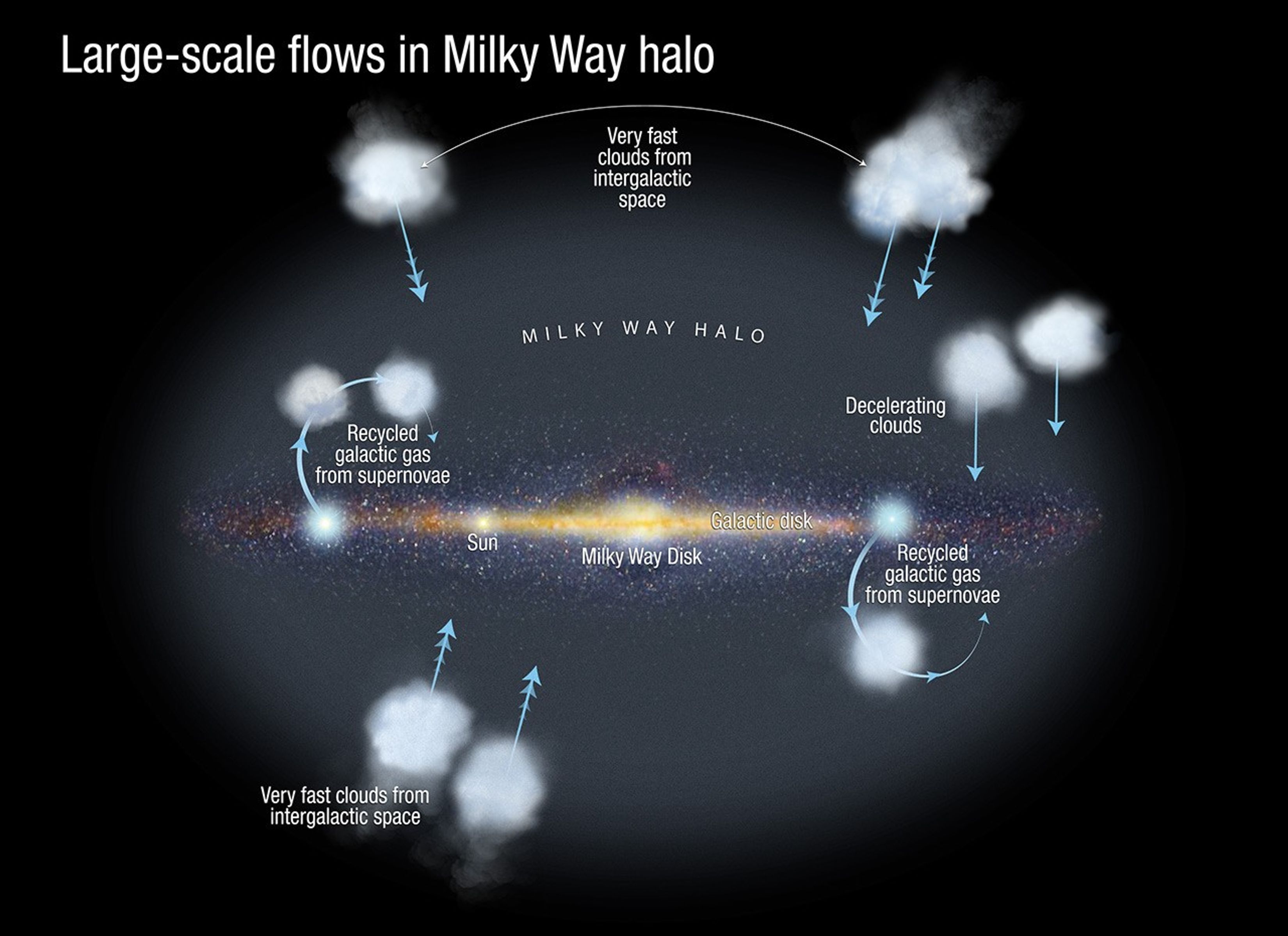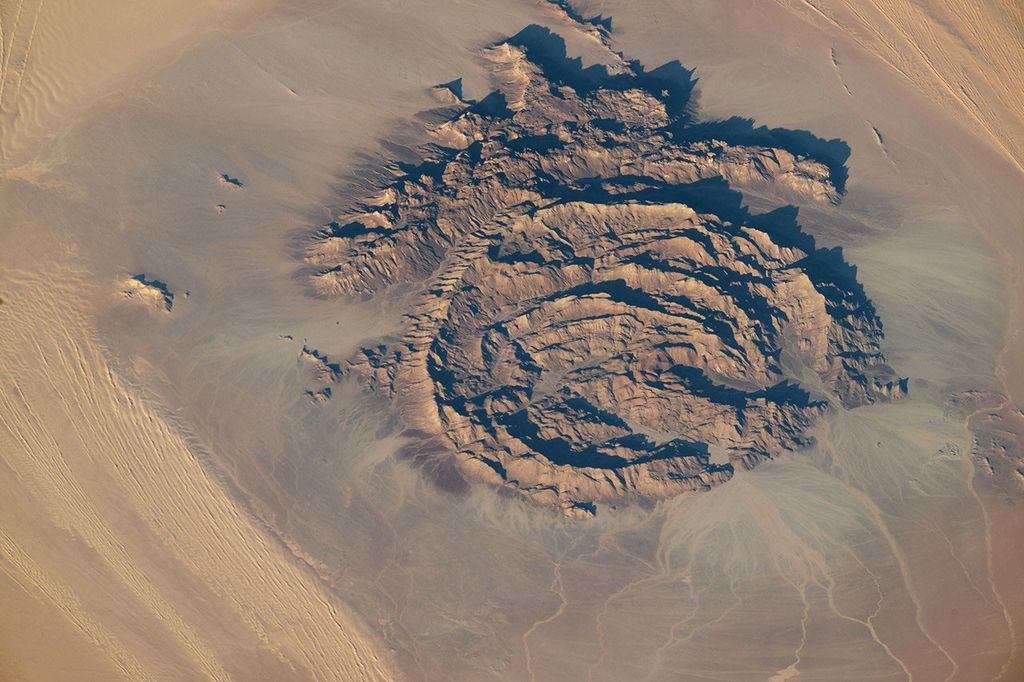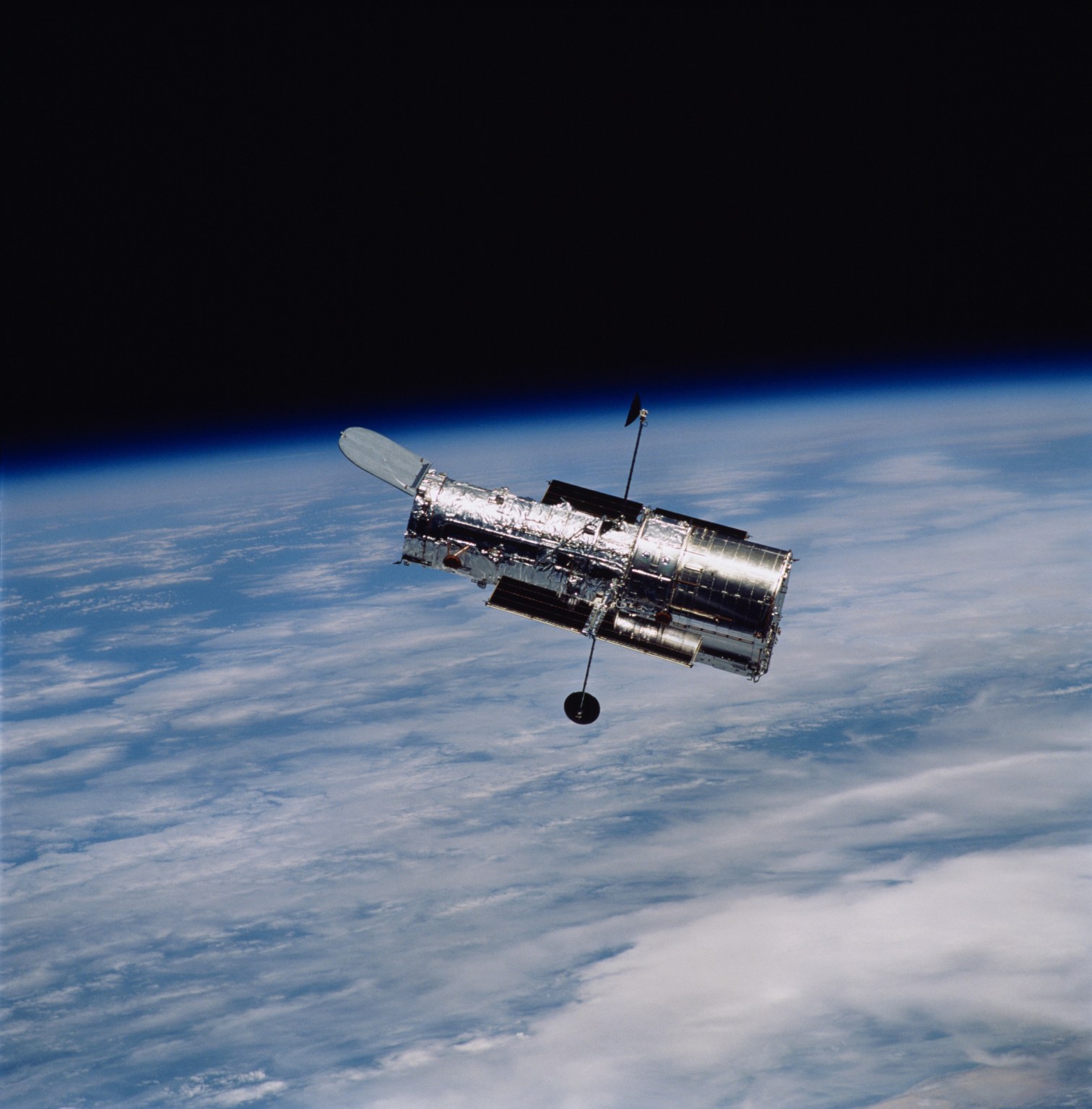1 min read
Large-Scale Flows in the Milky Way Halo

This diagram shows the large-scale flows of gas in the Milky Way halo of faint stars and hot gas. Using the Hubble Space Telescope's Cosmic Origins Spectrograph and Space Telescope Imaging Spectrograph, Nicolas Lehner and Chris Howk at the University of Notre Dame were able to directly constrain the distance of the fast-moving ionized clouds responsible for flows of gas in the Milky Way halo. The invisible clouds were detected by finding their absorption signature in the ultraviolet spectra of distant background halo stars. The researchers found that the clouds are reservoirs of gas that enable stars to continue to form in the Milky Way. Without the replenishment from recycled gas and infalling extragalactic material, stars would have stopped forming in the Milky Way a long time ago. This study also suggests the clouds slow down as they approach the Milky Way.
- Object NameObject NameA name or catalog number that astronomers use to identify an astronomical object.Milky Way
- Release DateAugust 25, 2011
- Science ReleaseFast Falling Clouds Fuel Milky Way Star Formation
- Credit
Share
Details
Last Updated
Aug 17, 2025
Contact
Media
Claire Andreoli
NASA’s Goddard Space Flight Center
Greenbelt, Maryland
claire.andreoli@nasa.gov

































